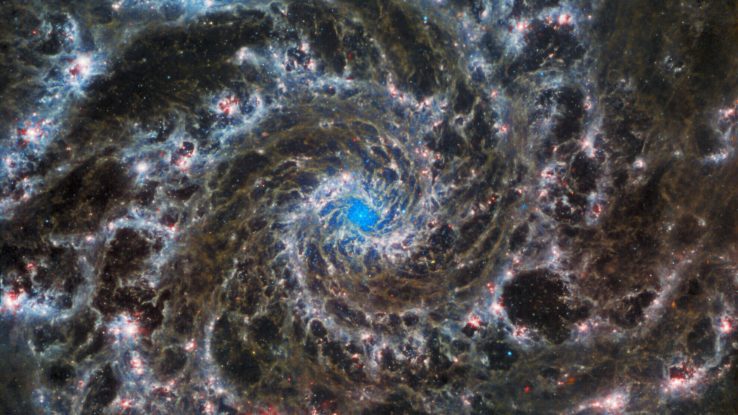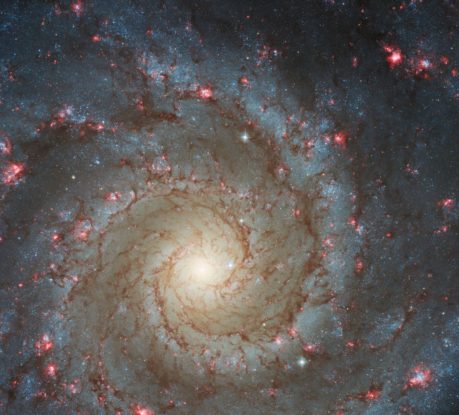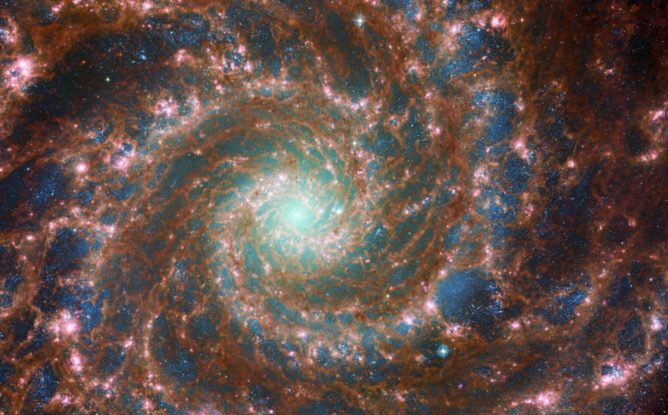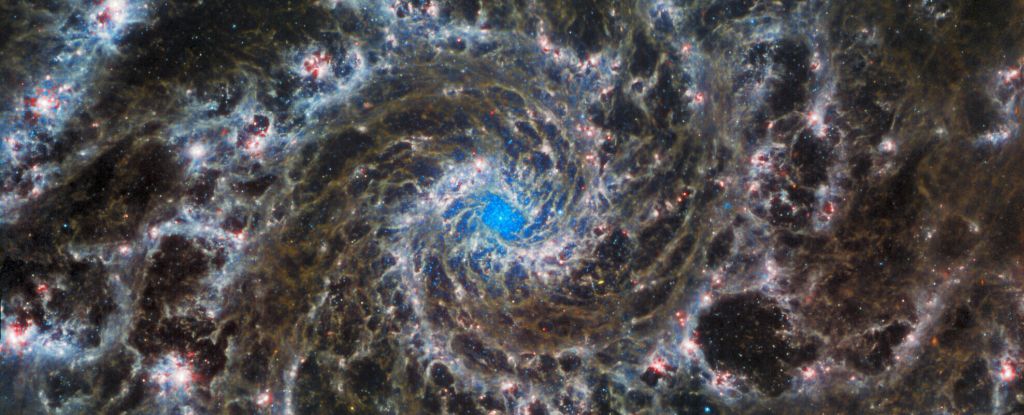Products You May Like
Well, it had to happen eventually, and now it has. Hubble and the James Webb Space Telescope (JWST) have this week released images of the same object.
The result is a set of images that reveal the magnificently complementary abilities of the two telescopes, and some fascinating insights into one of the most spectacular galaxies visible from Earth – M74 or NGC 628, also known as the Phantom Galaxy.
We had a sneak peek of the new JWST image in July, thanks to the efforts of citizen scientist Judy Schmidt. Now it’s gone through the official processes, and been joined by a new release from Hubble.

The Phantom Galaxy really is a stunner. It’s located around 32 million light-years from Earth, in the constellation of Pisces, and oriented in such a way that we can see the full glory of the broadside of its galactic disk.
And what a disk it is. The galaxy is what is known as a ‘grand design‘ spiral galaxy, with prominent, well-formed, and clearly visible spiral arms.
Since it’s very easy for galaxies to become messed up by events such as interactions with another galaxy, grand design galaxies represent pretty much the platonic ideal of a spiral galaxy and can be studied to understand galaxy dynamics and star formation within the spiral arms.
Because the two telescopes are strong in different wavelength ranges, their observations can be compared to tease out the fine details about what’s happening in the Phantom Galaxy.

Hubble’s image is in ultraviolet and optical wavelengths. It shows thick, dark, ropy regions that are dense with dust and bursts of red. These are huge clouds of hydrogen gas that are glowing brightly in ultraviolet, the result of intense flurries of star formation.
What Hubble can’t do very well is penetrate deeper into the dust and gas to obtain more detail about those recent episodes of star formation.
However, this is what JWST, with its sensitive and powerful infrared capabilities, can do.
Infrared radiation has a longer wavelength than visible or infrared light, which at shorter wavelengths is scattered more easily by small particles. This means infrared light can pass relatively unobscured through dusty, cloudy regions; if you can see in infrared, as we can with JWST, you can see things you wouldn’t be able to see in shorter wavelengths.
So, Hubble uses its Advanced Camera for Surveys to identify the ultraviolet light emitted by regions of star formation. Then, JWST can come along and actually peer into the clouds identified by Hubble, using its Mid-InfraRed Instrument (MIRI).
This is what gives us two such very different (and beautiful) views of the same galaxy.

There have been other excellent infrared instruments looking at star-forming regions, but JWST is the most sensitive space telescope of all time (so far). Scientists have high hopes that this fledgling observatory will shed new light on everything it shows us.
The two images, from Hubble and JWST, are available on their respective websites in wallpaper sizes. You can find them here and here.
